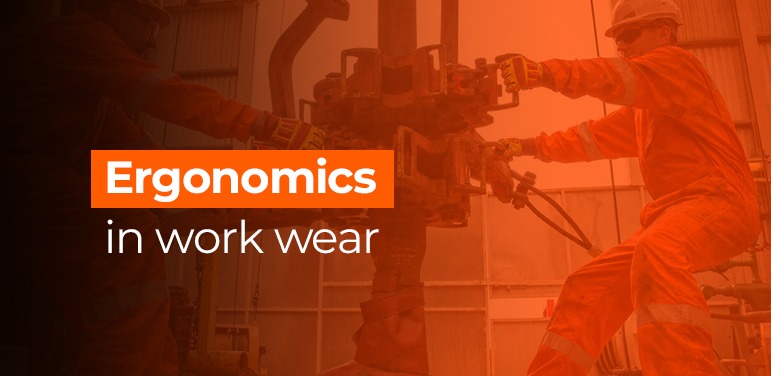As the name suggests, work wear is intended to be worn at a place of employment. Each workplace is unique, and work clothing should reflect this by being user-friendly. Additionally, we refer to the work wear’s ergonomics when we discuss how well it satisfies user needs. The environment in which the work wear will be used, the physical form of the user, and the tasks that must be carried out while wearing the work wear should all be taken into account when creating ergonomic work wear.
Let’s examine these components in more detail.
The comfort of the user is greatly influenced by their environment. The fabric choice and garment design can, to some extent, address this concern. In our post titled “Improving comfort with FR choice options for workers,” we went into great detail about the numerous variables that should be taken into account while developing comfortable work wear.
Comfort can be impacted by a variety of work wear design factors. In hot climates, it is best to avoid wearing work attire with a lot of fancy pockets and overlapping fabric patterns because the latter affects overall permeability and, consequently, the body’s capacity to escape the heat. Labels, instructions, and logos shouldn’t be overly thick, rigid, or impermeable. In a similar vein, chilly climates should be prepared with items like fleece layers, hand warmers, and windbreakers.
The fit shouldn’t be too tight or too loose. Despite the availability of sizing charts and standard sizes, many users do not fit into these categories. However, some users are tall and lean, so the combined girth and length gradation will not produce an appropriate fit. Sizes are typically graded in both girth and length. If adequate adjustment options cannot be offered to accommodate all size differences, then custom sizes should be offered.
Finally, it is important to understand the work activity performed by the user in the workplace. A collective understanding of the activity can help in determining a common design option to be offered. Utility pockets, safety loops, padding, and anti-wick lining are some of the standard functionalities which can be incorporated into the design. Specially designed hidden vents are often provided for garments in humid working climates. Optionally enhancing features like anti-microbial finished anti-odor finish, help in improving the wellness of users.
With increasing aesthetic requirements for protective clothing, leaner fits are being used. These constricted designs use stretchable protective fabric to compensate for the loss of freedom of movement.
Continuous innovation is happening to improve the ergonomics of work wear such as improvements in reflective tapes. For applications with a high possibility of heat stress, perforated, heat transfer reflective tapes are being used. These tapes claim to not hinder the breathability and body heat loss behavior of the base fabric on which they are applied.
Tarasafe’s commitment toward the next generation of work wear prioritize safety with comfort.


Leave a Reply